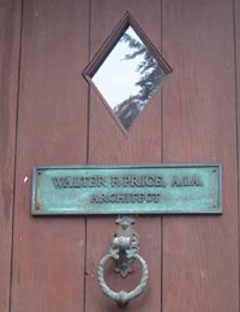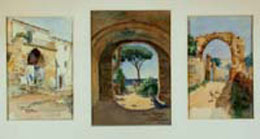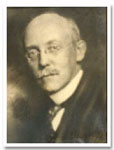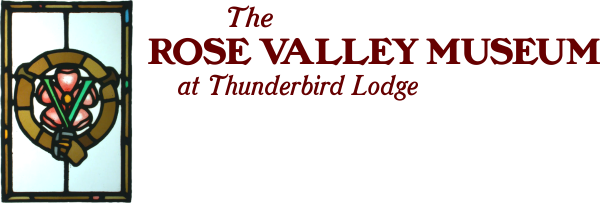Walter F. Price

Door to home office in Moylan.

 Walter Ferris Price (1857-1951) was an architect, scholar, watercolorist and photographer. He attended Westtown School and Friends Select and graduated from Haverford College in classical studies in 1881, receiving his master’s degree from Harvard in 1884. He was one of the founders of the Haverford School, where he taught classics for seven years.
Walter Ferris Price (1857-1951) was an architect, scholar, watercolorist and photographer. He attended Westtown School and Friends Select and graduated from Haverford College in classical studies in 1881, receiving his master’s degree from Harvard in 1884. He was one of the founders of the Haverford School, where he taught classics for seven years.
After several trips to Europe, Price became so enamored by European architecture, and particularly Italian, that he switched careers, joining his two brothers, Frank L. and William L. Price, in their firm for nearly 10 years. In 1902 he launched his own career with work for Haverford College and speculative housing design for the developer Milton W. Young, primarily in the new Overbrook section of Philadelphia. He was in partnership with his cousin, William McKee Walton, from 1923-1935, during which time he became known as an authority on Friends’ meetinghouses. He designed the meetinghouse for Westtown School, which led to the firm’s commission for the Florida Avenue Meeting in Washington, D.C. During his career he designed numerous houses in the Philadelphia area. His institutional work included three hotels in Atlantic City, the Phillips Memorial at West Chester State College, several buildings at Haverford and the Alumnae Hall at Mt. Holyoke College. He joined the T-Square Club in 1892 and was a member of the AIA.
Walter Price arrived in Rose Valley with the rest of the Prices in 190l. Having lived some years in Wallingford as a boy, he was familiar with the area and made many watercolors of local sights. He was a photographer by avocation, and in 1902 the Rose Valley Folk asked him to record changes being wrought in the new community. In 1906 he married Felicia Thomas and bought the pre-existing farmhouse on the corner of Price’s Lane. Using plaster, tile and the addition of a pergola, he remodeled it into a house harmonious with both his brother Will’s Rose Valley architecture and the Italian style that had so impressed him. It became the prototype for the house he designed for his family in Moylan and for which they left Rose Valley in 1916. His interest in art and photography resulted in an extensive library of books which he bound by hand, a craft he picked up in Rose Valley and practiced for the rest of his life.
Sources: Exhibition of Rose Valley Art and Handicrafts 2001
History of Rose Valley, vol.1
Price Family Papers
Biographical Dictionary of Philadelphia Architects
Chronicles of the Folk, June 1902

